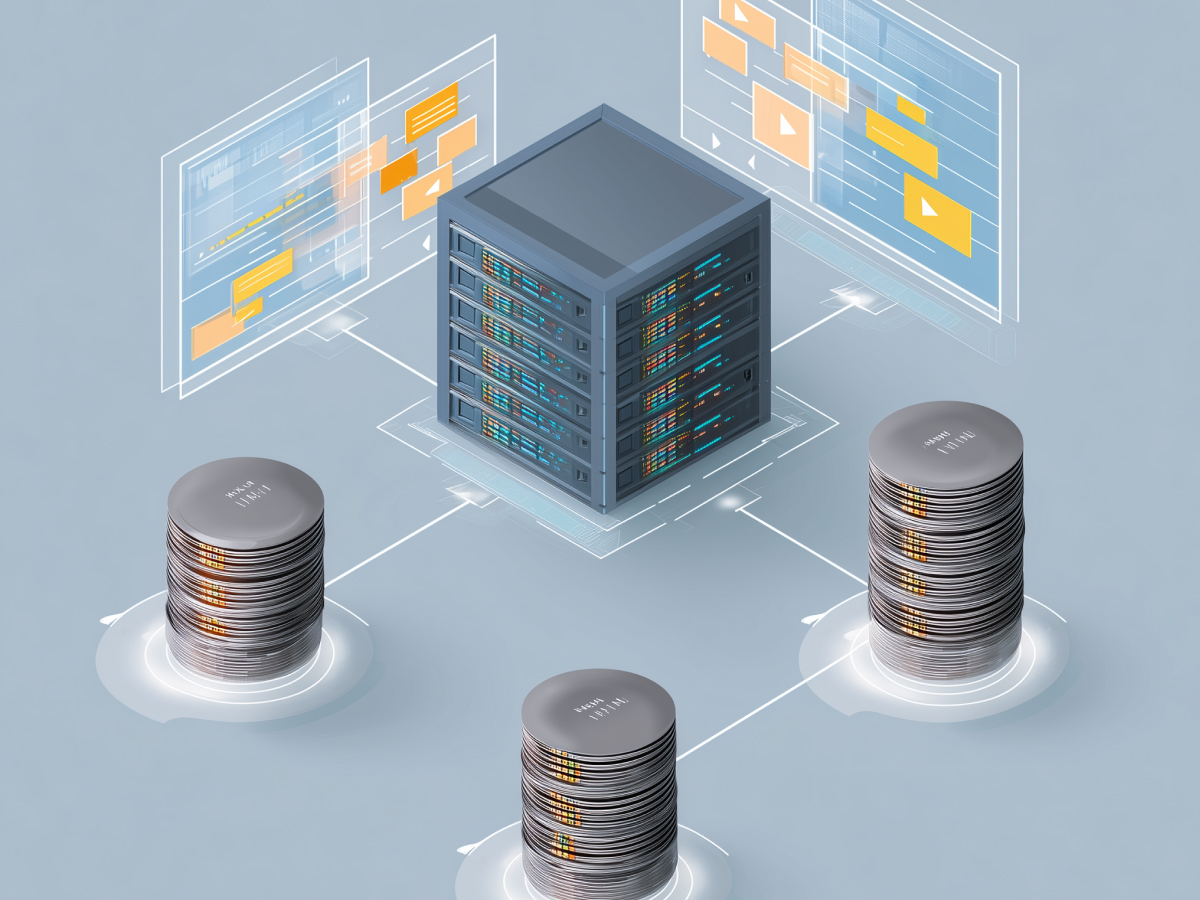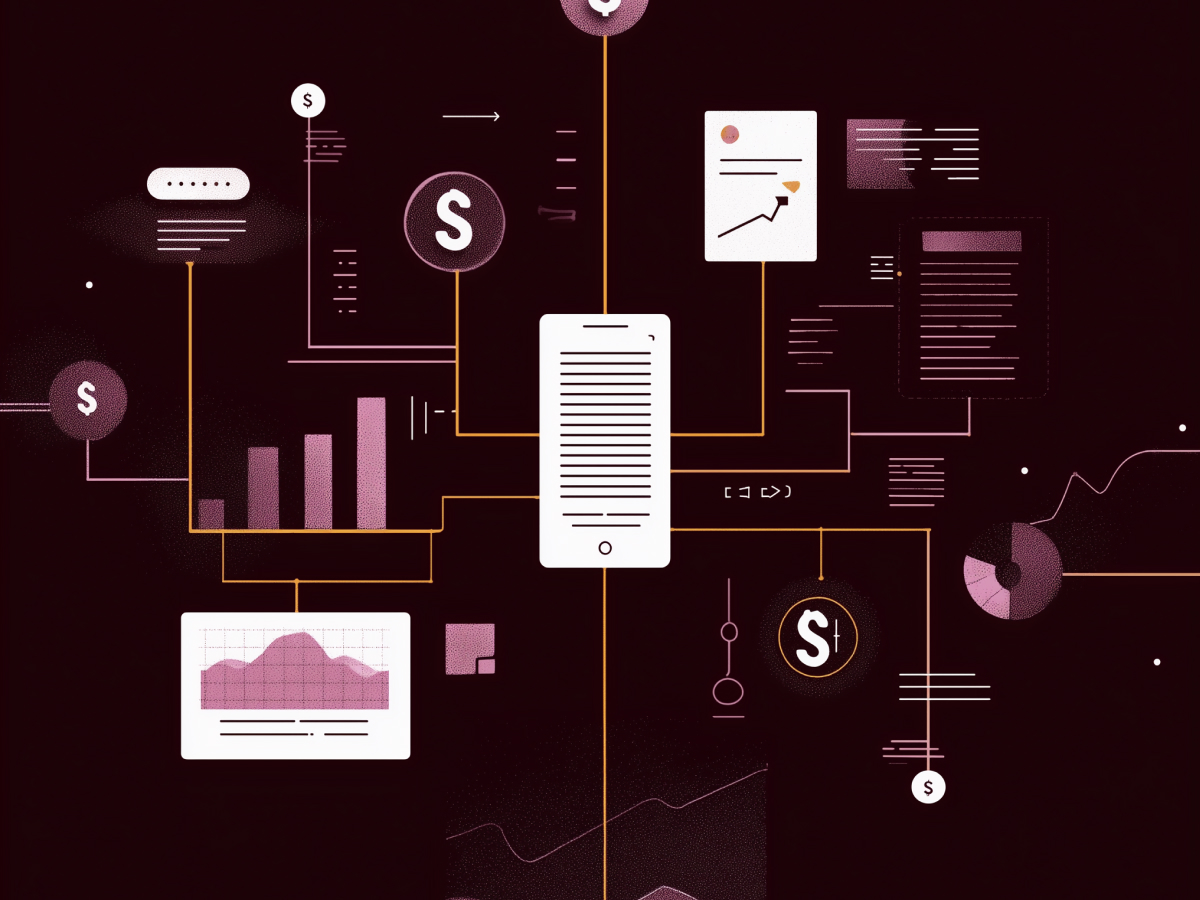Define data protection objectives
If you don’t know what data you’re protecting, or why, it’s hard to make smart decisions. Most companies say they want to protect critical assets, but they rarely take the time to clearly define what that critical data is. Before you even think about tools or vendors, get clarity on what matters. Start with your “crown jewel” data. That’s the stuff that, if exposed, would cause significant damage, financial, operational, reputational.
Your sensitive data isn’t always where you think it is. Teams outside IT, like legal, HR, or marketing, often hold data outside monitored systems. It’s distributed. So, involve business leaders early. Work with department heads to map out who holds what, where it lives, and how it moves. This gives your security team a clear target and avoids surprises later.
Leadership alignment matters, too. Data protection has trade-offs, tight controls can hurt productivity if they’re not well scoped. You’re not protecting everything; you’re protecting what matters most, within the limits of your team and budget. Discuss this with the C-suite and board. What’s your risk tolerance? What resources are you ready to commit? That’s your program design. It sets the baseline for every security decision, from hiring to technology investment.
Get this part wrong, and everything else will be reactive. Get it right, and your entire security model becomes intentional. It’s the difference between being in control or being in cleanup mode after a breach.
Leverage AI-driven automation for data classification
Data doesn’t stand still anymore, it’s generated constantly, across devices, apps, and clouds. Trying to track it manually doesn’t scale. It slows teams down and leaves blind spots, in short, it fails. Automation changes that. Smart classification tools can identify and categorize data without needing human input every step of the way.
AI is changing the speed and accuracy of data protection. Traditional classification methods, based on keywords and manual tagging, can’t keep pace. AI doesn’t just scan for old patterns; it learns as data flows through. It refines classification models across endpoints, cloud environments, and communication platforms, getting better over time. You get precision without the overhead.
If you’re evaluating solutions, prioritize classification engines that can act in real time. They should work across environments, files, emails, SaaS apps, and flag content without waiting for someone to label it. This is not a nice-to-have, it’s essential. If your system can’t keep up with the speed of your data, it fails to protect.
There’s a cost advantage, too. Rather than throwing more people at the problem, you deploy smarter infrastructure. The CIO and CISO get better accuracy; the broader team spends less time managing exceptions. And the board gets what it wants: meaningful risk reduction with tangible ROI.
This is where data protection earns its seat at the strategy table. Minimum input, high-impact results, if you’ve got the right layer of automation in place.
Implement zero trust access control policies
Assume nothing. That’s the core principle behind zero trust. It doesn’t matter if the request is coming from inside your network, from a known user, or from a trusted device, every request must be verified. No exceptions. This model is now essential for any business operating in today’s threat environment.
Most breaches happen because someone had access they didn’t need. With zero trust, you remove that risk by following least-privilege access. Every user gets access only to the data and systems required to do their job, nothing more. This limits how far an attacker can go, even if credentials are compromised.
Implementing this model starts with visibility. Know who’s accessing what, when, and from where. Then move to enforcement. Use centralized tools that can apply granular policies across all applications, whether on-premises, in the cloud, or both. Access controls should adapt based on context. That includes location, device hygiene, behavior, and time of access.
This isn’t just a security uplift, it’s a business enabler. Zero trust ensures that productivity stays high without compromising protection. Teams can work from anywhere, using any system, with every touchpoint evaluated for risk.
C-suites should view zero trust as more than a technical architecture. It’s a governance model. It aligns IT controls with business intent, keeps systems resilient during breaches, and ensures that your data ecosystem is always operating on verified trust, not assumed trust.
Centralize data loss prevention (DLP) systems
Data Loss Prevention doesn’t work when it’s fragmented. Point solutions, one for email, one for endpoint, one for the cloud, create overlap and noise. Incidents trigger multiple alerts for the same data, slowing down response times and overwhelming your security team. That’s not sustainable. What you need is a centralized DLP engine that covers everything.
Centralization brings consistency. One engine classifies, monitors, and protects your data across all channels, on devices, over the network, and within cloud services. That single enforcement layer removes gaps and makes it easier to apply policies uniformly. Your team sees one alert per incident, not five.
Adopting this model aligns well with Security Service Edge (SSE) architecture, which delivers these capabilities as a cloud-native service. This gives you real-time protection across every environment your data moves through, without the operational drag of maintaining separate systems.
Scalability also becomes straightforward. As your business adopts new apps, expands across regions, or moves deeper into cloud services, your DLP engine scales with you. That cuts cost, simplifies architecture, and supports a proactive risk posture.
For the C-suite, centralized DLP isn’t just about stopping data leaks. It’s about control, accuracy, and speed. Your security team works faster. Your risk profile improves. And your organization stays protected, even as everything else changes.
Secure critical data loss channels
Most data loss doesn’t come from sophisticated attacks. It comes from routine actions, emailing the wrong document, misconfiguring a SaaS app, saving sensitive files to unmanaged devices. These actions happen daily. If you want strong data protection, you start by locking down the most common loss points.
Focus first on email and web traffic. These remain the top channels where sensitive data can leak by accident or design. DLP policies at these layers should detect unsanctioned sharing in real time. SaaS platforms are another area to prioritize, particularly when users can easily share files with links or third parties. Use Cloud Access Security Brokers (CASBs) and SaaS posture management tools to monitor risky file exposure.
Endpoints are critical, too. That includes USB activity, local printing, and file transfers over unsecured networks. Implement policies that block or log these actions at the OS level. For organizations with a bring-your-own-device (BYOD) footprint, make sure data isn’t being directly downloaded to unmanaged hardware. Browser isolation helps here by rendering data securely and preventing local theft, even on devices you don’t control.
Additionally, focus on infrastructure-as-a-service (IaaS) platforms like AWS, Azure, and Google Cloud. Sensitive customer data often lives there, exposed by misconfigured permissions or public-facing storage. DSPM (Data Security Posture Management) tools detect and fix these gaps before they become problems.
For executives, the message is practical: you don’t need to protect everything at once. Start with where data leaves the company. Work your way out from the highest-risk channels. Invest in systems that track data flow across your stack, and intervene before incidents escalate. That’s how you reduce exposure at scale.
Integrate ongoing compliance into data protection strategies
You can’t separate compliance from security anymore. Not when regulations like GDPR, HIPAA, CCPA, and PCI DSS carry real financial and legal consequences. Meeting these obligations requires that compliance becomes part of how you operate, not just a checklist exercise once a year.
A strong compliance posture begins with governance. Identify which regulations apply to your business depending on geography, industry, and data type. Then enforce that through documentation, access control frameworks, audit readiness, and encryption policies. Your systems should support this automatically. That includes secure data storage, access logging, real-time monitoring, and alerting.
Regular audits are essential. Internal audits surface gaps early. External assessments validate that your controls hold up under scrutiny. Compliance is ultimately about trust, trust with customers, partners, and regulators. It’s not optional.
Technical solutions play a key role. Deploy DLP and encryption that meet regulatory thresholds, and make use of reporting tools that help compliance teams show proof of control. Many SaaS platforms now include built-in settings to align with ISO 27001, SOC 2, and similar frameworks. These tools simplify processes, but only if configured correctly.
Executives need to understand that compliance is an ongoing cost of doing business in a digital economy. Done right, it’s a value driver. It differentiates your brand, builds resilience into operations, and keeps regulators off your back. Good compliance reduces risk while enabling faster innovation, not blocking it.
Strategize for BYOD security challenges
BYOD, bring your own device, is standard now. Employees, contractors, and partners access your systems using their personal laptops, tablets, and phones. These devices often fall outside your visibility. You can’t manage their patch levels or enforce endpoint configurations. Yet they’re still touching your critical data.
That creates risk. You don’t control the hardware, but you’re responsible for the data that passes through it. This is where traditional endpoint agents, CASB proxies, and virtual desktop infrastructure (VDI) often fall short. They can be complex, expensive, or impractical to scale.
Browser isolation solves this cleanly. It allows data to be viewed, accurately rendered in a session, without downloading or storing anything on the device. Sensitive content is streamed visually rather than transferred. You retain control over whether users can print, copy, paste, or download. This provides policy enforcement and isolation without installing anything on personal devices.
This approach is supported by modern Security Service Edge (SSE) architectures, where network traffic is inspected and managed in the cloud. That allows for real-time response and alignment with DLP policy across devices, regardless of ownership.
For leaders, the value is clear. You can enable BYOD access without relaxing controls. Partners get what they need, contractors stay productive, and internal teams avoid friction. It reduces risk and support overhead, while allowing your business to move faster in distributed environments.
Monitor and manage cloud data configurations with SSPM and DSPM
Your cloud stack is likely sprawling across SaaS platforms and IaaS environments. Tools like Microsoft 365, Salesforce, AWS, Google Cloud, and Azure now hold sensitive data. If these platforms are misconfigured, data exposure becomes inevitable. It’s not just a bad look, it’s an immediate liability.
The problem is most cloud environments aren’t configured by security teams. DevOps moves fast, and features get deployed with open settings or excessive integrations. These missteps are hard to see in real time, unless you’ve got the right tooling.
SaaS Security Posture Management (SSPM) handles this on the SaaS side. It continuously scans app settings, permissions, and file-sharing rules for mistakes. It finds overly broad access, risky third-party plugins, and compliance gaps. For infrastructure environments, Data Security Posture Management (DSPM) does the same, but across cloud storage, databases, and data lakes.
Both systems use APIs to connect directly to your environments, no agents needed. They give your security teams real visibility into where sensitive data lives and whether the current configuration is safe. Some solutions also match findings against compliance frameworks like NIST, ISO, and SOC 2.
For the C-suite, this means fewer surprises. Instead of waiting for an incident, you identify and close risks early. It’s scalable, efficient, and aligned with how cloud-native teams operate. As you increase investment in the cloud, SSPM and DSPM keep your security posture current, with no trade-off in speed or agility.
Establish comprehensive data security training programs
You can implement powerful tools, but if people ignore policies or don’t understand the risks, it won’t matter. Data protection doesn’t work without user understanding and participation. That’s why consistent, relevant, and well-supported training is critical.
Security training needs to move beyond required annual checklists. It should be tightly aligned with your actual data protection goals. Employees should understand what data matters, how to handle it safely, and what they’re expected to do when something feels off. Tie training to real operational context. This keeps the content purposeful, not theoretical.
More advanced solutions integrate user coaching directly into incident workflows. For example, if a user triggers a DLP alert, the platform can prompt them in real time via Slack or email. This gives the opportunity to ask for justification, explain why the issue triggered, and reinforce policy expectations. It’s education at the exact moment it matters.
Executive endorsement matters here. If upper management doesn’t visibly back these programs, participation will be weak. Everyone from leadership to contractors must recognize that data protection isn’t just a technical task, it’s shared responsibility.
For the C-suite, the connection is direct. A small investment in education reduces incident volumes, increases policy compliance, and builds a culture where people contribute to the security framework. Every other layer of defense is strengthened when the human layer is prepared.
Automate incident response and workflow management
Security incidents happen frequently, false positives, misclassifications, actual threats. Manually managing this volume consumes time, slows response, and burns out teams. Automation solves this by standardizing how incidents are handled from detection to resolution.
A strong data protection platform should include workflow automation embedded in its incident response. This allows events to be triaged, escalated, investigated, or closed without human bottlenecks. Security teams define rules once, actions happen in real time.
The impact is measurable. Faster response reduces risk exposure. IT and security teams spend less time on routine triage and more on high-value priorities. Automation also ensures that policy-based actions are enforced consistently, regardless of who’s responding.
Integrated workflow systems also provide visibility to leadership. You see where issues happen, what resolution steps are effective, and how your risk posture is trending over time. The data generated gives executives a clearer picture of performance and gaps.
For C-suite leaders, this is about scale and sustainability. As your business grows, your risk surface expands. Automated incident management lets your team keep up without increasing headcount. It’s one of the most direct ways to maintain security efficiency while keeping momentum on innovation.
In conclusion
Data protection isn’t a side project, it’s core infrastructure. The threats aren’t theoretical, and the fallout isn’t abstract. Operational downtime, damaged trust, regulatory fines, those are all real, and they scale fast. But the upside is just as real. When your data is secured, your business moves faster, scales smoother, and earns more trust.
The right approach doesn’t have to create friction. In fact, strong data protection should reduce complexity. Automate what you can. Centralize controls. Focus your resources where risk actually lives. And most of all, build a culture where teams understand that security is everyone’s responsibility, led from the top.
For executives, this isn’t just about avoiding risk. It’s about enabling action. Secure systems support better decisions. They create room for innovation. And when the fundamentals are in place, your teams can operate with speed and confidence, no second-guessing, no unnecessary exposure.
This is how modern leaders scale securely. The playbook is in your hands.





